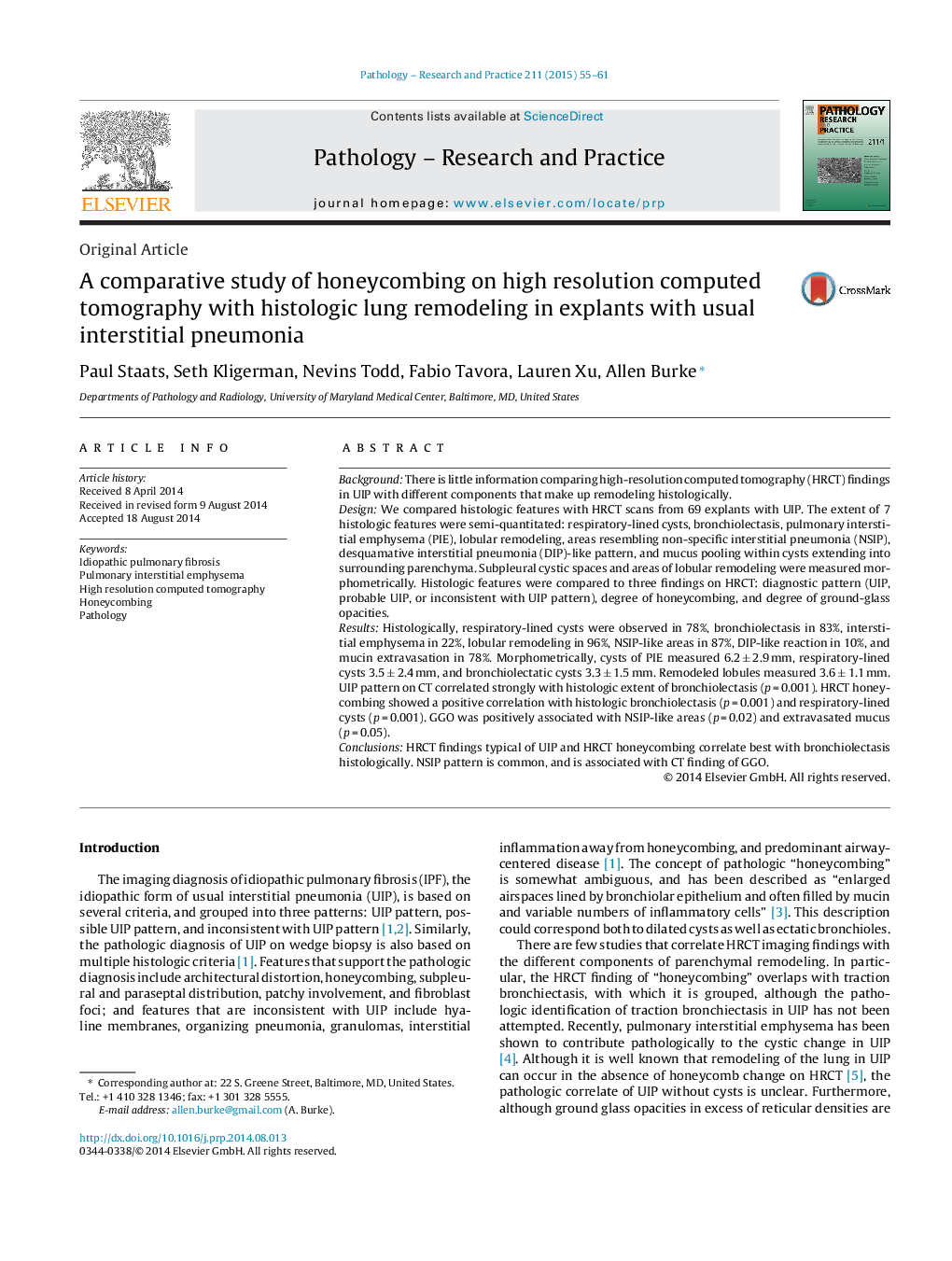| Article ID | Journal | Published Year | Pages | File Type |
|---|---|---|---|---|
| 2155164 | Pathology - Research and Practice | 2015 | 7 Pages |
BackgroundThere is little information comparing high-resolution computed tomography (HRCT) findings in UIP with different components that make up remodeling histologically.DesignWe compared histologic features with HRCT scans from 69 explants with UIP. The extent of 7 histologic features were semi-quantitated: respiratory-lined cysts, bronchiolectasis, pulmonary interstitial emphysema (PIE), lobular remodeling, areas resembling non-specific interstitial pneumonia (NSIP), desquamative interstitial pneumonia (DIP)-like pattern, and mucus pooling within cysts extending into surrounding parenchyma. Subpleural cystic spaces and areas of lobular remodeling were measured morphometrically. Histologic features were compared to three findings on HRCT: diagnostic pattern (UIP, probable UIP, or inconsistent with UIP pattern), degree of honeycombing, and degree of ground-glass opacities.ResultsHistologically, respiratory-lined cysts were observed in 78%, bronchiolectasis in 83%, interstitial emphysema in 22%, lobular remodeling in 96%, NSIP-like areas in 87%, DIP-like reaction in 10%, and mucin extravasation in 78%. Morphometrically, cysts of PIE measured 6.2 ± 2.9 mm, respiratory-lined cysts 3.5 ± 2.4 mm, and bronchiolectatic cysts 3.3 ± 1.5 mm. Remodeled lobules measured 3.6 ± 1.1 mm. UIP pattern on CT correlated strongly with histologic extent of bronchiolectasis (p = 0.001). HRCT honeycombing showed a positive correlation with histologic bronchiolectasis (p = 0.001) and respiratory-lined cysts (p = 0.001). GGO was positively associated with NSIP-like areas (p = 0.02) and extravasated mucus (p = 0.05).ConclusionsHRCT findings typical of UIP and HRCT honeycombing correlate best with bronchiolectasis histologically. NSIP pattern is common, and is associated with CT finding of GGO.
